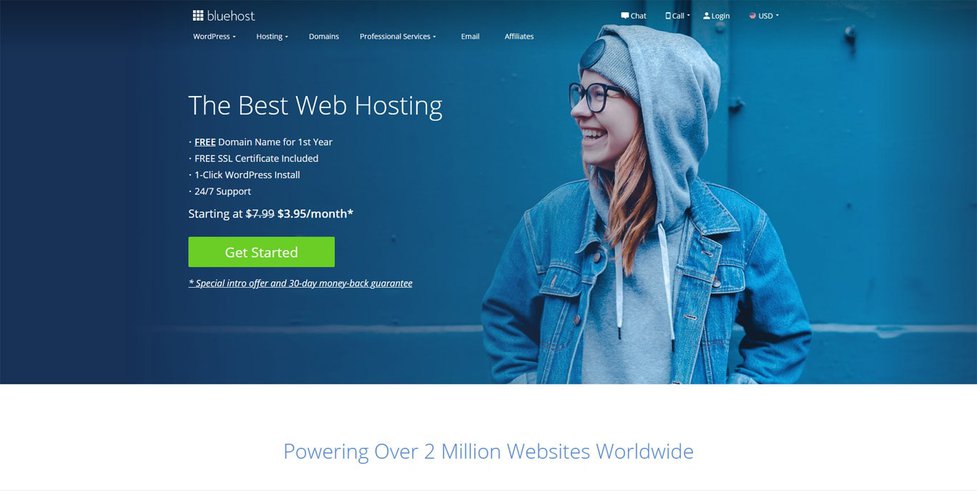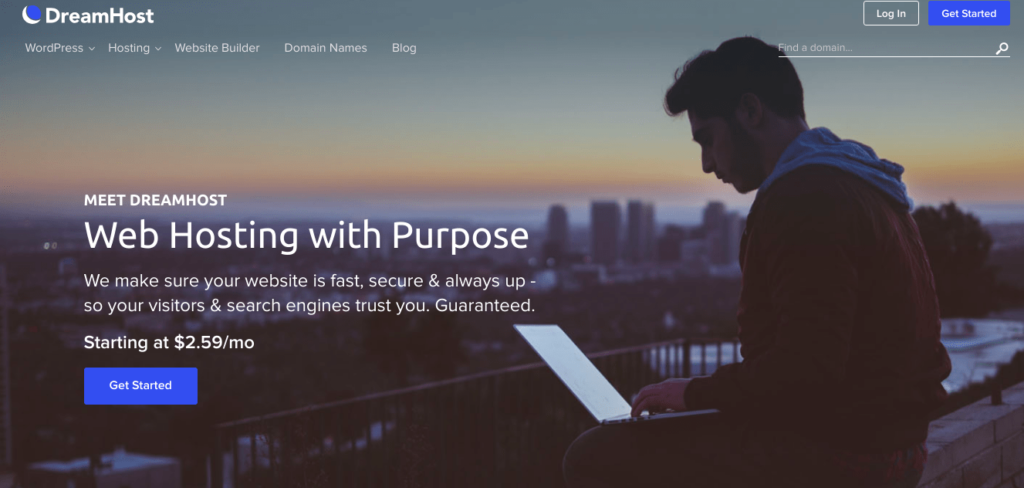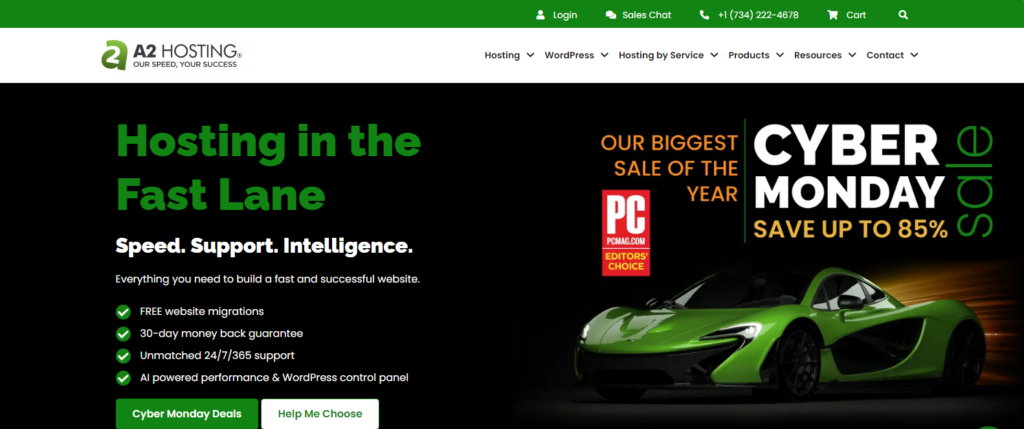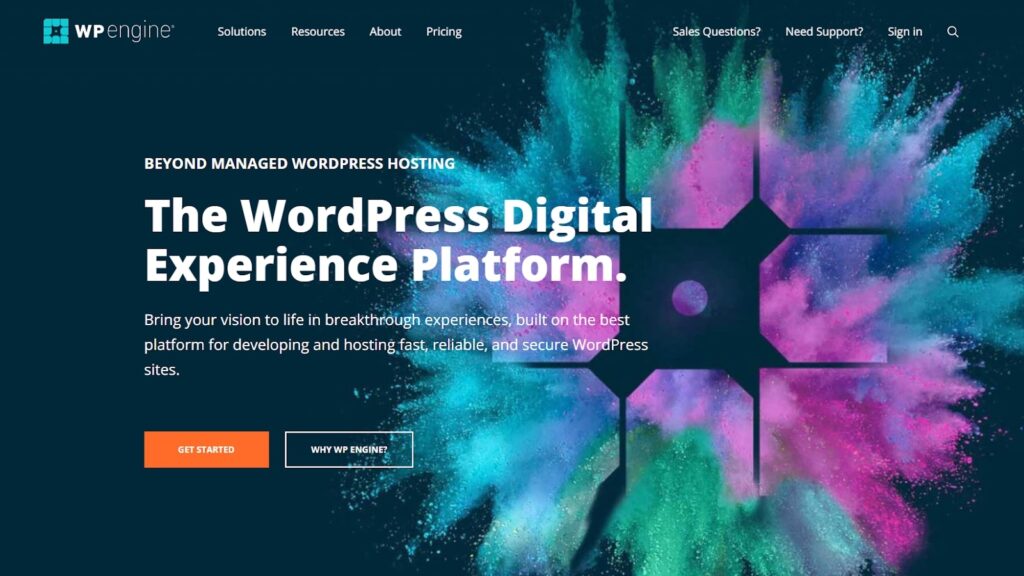Table of Contents
ABOUT Website Host And Key Factors:
Website hosting is a critical aspect of establishing an online presence, serving as the foundation for a website’s accessibility and performance. Selecting the right hosting provider and understanding key factors can significantly impact a site success. Reliability is paramount, with uptime percentages indicating the server availability. Optimal performance, fast loading times, and efficient resource allocation contribute to a positive user experience. Scalability is another crucial factor, allowing a website to handle increased traffic and data as it grows. Security measures, including SSL certificates and regular backups, protect against cyber threats and data loss. Customer support is vital, ensuring prompt assistance in case of issues. Cost considerations involve finding a balance between budget and the hosting plan’s features. Different types of hosting, such as shared, dedicated, and cloud hosting, cater to diverse needs. Shared hosting is cost-effective but shares resources among multiple websites, potentially affecting performance. Dedicated hosting provides exclusive server access, ideal for resource-intensive sites. Cloud hosting offers flexibility and scalability by utilizing multiple interconnected servers.
IN THIS ARTICLE:
In this article, we provide you the 10 main essential elements to guide your decision in building a robust hosting solution. From ensuring top-notch performance to emphasizing security and exploring various hosting types, each factor plays a pivotal role in shaping your online presence.Let this article be your roadmap as you embark on creating a hosting solution that aligns perfectly with your unique needs and aspirations. Elevate your website with these key considerations, paving the way for a successful online Website hosting.
THE 10 Main WEB HOSTING KEY FACTORS:
Main Considerations
When evaluating a web hosting provider, there are three major factors you should first consider: average uptime, page load time, and customer support.
1) Average Uptime
Average Uptime, a critical metric in the realm of technology and service reliability, quantifies the duration a system or service remains operational without interruption. Represented as a percentage, it reflects the efficiency and dependability of a platform over a specified period. High average uptimes signify robust infrastructure and minimal disruptions, fostering user trust and satisfaction. Organizations, particularly in IT and cloud services, prioritize maintaining impressive average uptimes to ensure uninterrupted operations, customer loyalty, and business continuity. Rigorous monitoring, redundant systems, and proactive maintenance contribute to achieving and sustaining high average uptimes, minimizing downtime-associated costs and enhancing overall performance. This metric is paramount in assessing the reliability of digital ecosystems, emphasizing the commitment to seamless user experiences and the vitality of uninterrupted service delivery. Average Uptime is determined by calculating the percentage of time a system or service remains operational over a specified period. The main steps involve monitoring the system’s performance, recording instances of downtime, and then calculating the uptime percentage based on the total time. This metric is crucial for assessing the reliability of digital platforms, guiding efforts to minimize disruptions, and ensuring optimal user experiences. Rigorous monitoring, proactive maintenance, and swift issue resolution are key steps to achieving and sustaining high average uptimes in the ever-evolving landscape of technology and services.
2) Load time
Load time is a critical metric in the digital landscape, measuring the duration it takes for a webpage to fully display its content. It plays a pivotal role in user experience and website performance. Faster load times are associated with improved user satisfaction, increased engagement, and lower bounce rates. Search engines prioritize swift-loading sites, impacting search rankings and visibility. Load time is influenced by factors such as server response, network latency, and the size of web assets like images and scripts. Efficient coding practices, content delivery networks (CDNs), and browser caching are implemented to optimize load times. Businesses recognize the direct link between load speed and conversion rates, prompting investments in optimization strategies. The ongoing emphasis on monitoring and enhancing load time reflects the industry’s commitment to delivering seamless digital experiences and meeting the expectations of users in an increasingly competitive online environment.
Load Time:
Measure the duration for a webpage to fully display content.
Web Optimization:
Employ strategies to enhance website performance.
User Experience Impact:
Faster load times contribute to improved satisfaction.
Search Engine Rankings:
Load speed influences search engine algorithms.
Network Latency:
Address delays in data transmission for quicker loading.
Efficient Coding Practices:
Optimize code to streamline page rendering.
Content Delivery Networks (CDNs):
Distribute content across servers for faster access.
Browser Caching:
Store frequently used resources to reduce load times.
Page Speed Insights:
Regularly assess and optimize load performance.
Conversion Rates:
Swift load times positively impact user engagement and
conversions.
3) Support
Support is a fundamental element in ensuring the smooth operation of systems, services, and products. It encompasses a range of activities designed to assist users and address issues, fostering a positive customer experience. Technical support involves troubleshooting, resolving software or hardware issues, and providing guidance on optimal usage. Customer support extends beyond technical aspects, addressing inquiries, feedback, and ensuring user satisfaction. Effective support systems contribute to user loyalty and trust, crucial in today’s competitive markets. Support can be offered through various channels, including online help desks, chat support, email, and phone assistance. Well-established support frameworks include knowledge bases, FAQs, and community forums, empowering users to find solutions independently. Proactive support involves anticipating and preventing issues through regular updates, maintenance, and user education. Ultimately, robust support mechanisms are integral to the success of products and services, contributing to long-term customer relationships and overall business resilience.
Support Services:
Offer assistance to users for technical and non-technical issues.
Troubleshooting:
Identify and resolve problems to ensure smooth operations.
Customer Assistance:
Address inquiries, feedback, and concerns promptly.
Technical Guidance:
Provide guidance on product usage and features.
Help Desks:
Establish online platforms for user support and issue resolution.
Chat Support:
Offer real-time assistance through chat interfaces.
Email Support:
Address user concerns and queries through email
communication.
Phone Assistance:
Provide support via telephone for immediate problem-solving.
Knowledge Bases:
Develop resources like FAQs and guides for user self-help.
Community Forums:
Foster user interaction and collective issue resolution through
online forums.
Other Considerations
Different businesses will have different hosting needs. A fledgling personal blog won’t need the same features that a large online store requires. Here are the factors you can consider depending on the specific needs of your business.
4) Pricing and renewal
Pricing and renewal dynamics are pivotal in shaping customer relationships and sustaining business models. Pricing strategies play a fundamental role in determining the perceived value of products or services. Transparent and well-communicated pricing models contribute to customer trust and satisfaction. Many businesses adopt tiered pricing structures, offering diverse packages to cater to varying needs and budgets. Discounts, promotions, and loyalty incentives often feature in these models, influencing customer retention and acquisition. Renewal processes, especially in subscription-based services, are critical for maintaining customer relationships. Clear communication regarding renewal terms, pricing adjustments, and any modifications in features ensures transparency. Automated
renewal systems streamline the process, minimizing disruptions for users who choose to continue their subscriptions. The effectiveness of pricing and renewal practices directly impacts customer satisfaction, loyalty, and overall business success. Striking a balance between fair pricing, added value, and seamless renewal experiences contributes to positive customer perceptions and fosters enduring relationships in a competitive market landscape.
Pricing Strategies:
Develop approaches to determine the cost structure of products or services.
Affordability and Value:
Balance pricing to ensure affordability while providing perceived value.
Tiered Pricing Models:
Offer different packages with varied features and costs.
Discounts and Promotions:
Implement special offers to influence customer retention and acquisition.
Renewal Processes:
Outline procedures for extending contracts or subscriptions after the initial term.
Clear Communication:
Clearly convey renewal terms, pricing adjustments, and changes in features.
Automated Renewal Systems:
Streamline the renewal process for user convenience.
Store Credit Options:
Provide alternatives like store credit in lieu of cash refunds.
Exchange or Replacement Policies:
Offer options for customers to exchange or replace items.
Transparent Policies:
Maintain openness in pricing and renewal terms to build trust with customers.
5) Free domain
Offering a free domain is a common strategy employed by hosting providers and website builders to attract users and simplify the process of establishing an online presence. A free domain typically involves providing users with a website address without additional registration fees for a specified period. This incentive is particularly appealing to individuals and businesses starting their online journey, helping reduce initial costs. However, it’s essential for users to carefully review the terms and conditions surrounding free domains, as some providers may require a commitment to a certain hosting plan or charge renewal fees after the initial free period. Despite potential limitations, the provision of a free domain remains an effective marketing tool, simplifying the onboarding process for users and encouraging them to explore the broader range of services offered by the provider. Incentive Offer: Provide a free domain as an attractive incentive.
Reduced Initial Costs:
Alleviate the financial burden on users starting their online journey.
Simplified Onboarding:
Streamline the process of establishing an online presence.
User Attraction:
Serve as a compelling offer to draw individuals and businesses.
Cost Reduction:
Eliminate additional registration fees for a specified period.
Marketing Tool:
Utilize a free domain as a marketing strategy to entice users.
Reduced Entry Barriers:
Facilitate easier entry into the online space for new users.
Promotional Benefit:
Enhance the value proposition of products or services.
User-Friendly Initiatives:
Contribute to a positive first impression and user experience.
Onus on Exploration:
Encourage users to explore additional services offered by the provider.
6) Bandwidth and storage
Bandwidth and storage are pivotal elements in the realm of digital services, particularly web hosting and cloud computing. Bandwidth refers to the amount of data that can be transferred over a network in a given time, impacting the speed and responsiveness of a website or application. Adequate bandwidth is crucial for handling user traffic without causing delays or interruptions. Storage, on the other hand, pertains to the amount of data that can be stored on servers. It encompasses files, databases, and other digital content. Sufficient storage capacity is essential for accommodating user-generated content, media files, and application data. Balancing bandwidth and storage is crucial for optimizing the performance and scalability of digital platforms. Web hosting plans often specify limits on both bandwidth and storage capacity, requiring businesses to choose plans that align with their data transfer and storage needs. As digital demands evolve, businesses must continually assess and adjust their bandwidth and storage allocations to ensure seamless user experiences and reliable data management.
7) SSL
SSL, or Secure Sockets Layer, is a fundamental technology that ensures the security and privacy of data transmitted between a user’s web browser and a website’s server. SSL encrypts the information exchanged, preventing unauthorized access and safeguarding sensitive data such as login credentials, personal details, and financial information. SSL certificates are cryptographic protocols that establish a secure connection, This visual indication reassures users that their interactions with the site are encrypted and secure. Beyond data protection, SSL is integral for search engine optimization (SEO), as major search engines prioritize secure websites in their rankings. The successor to SSL, Transport Layer Security (TLS), has become the standard protocol for securing internet communications. In an era where online security is paramount, SSL/TLS certificates are essential for building trust with users, protecting against cyber threats, and ensuring the confidentiality and integrity of sensitive information exchanged over the internet.
8) Refund options
Refund options are an integral aspect of consumer transactions, providing a mechanism for customers to receive a reimbursement for products or services that did not meet their expectations or were defective. Various refund options exist, often determined by the business’s policies and the nature of the transaction.
Full Refund:
This involves returning the entire purchase amount to the customer, including taxes and fees. It is typically offered when a product is faulty or a service fails to meet agreed-upon standards.
Partial Refund:
Businesses may opt to refund only a portion of the total amount, considering factors such as partial product use, service duration, or negotiated terms.
Store Credit:
Instead of a cash refund, some businesses offer store credit. Customers can use this credit to make future purchases within the same establishment.
Exchange or Replacement:
In cases where a product is defective or unsatisfactory, customers may have the option to exchange the item for a new one or receive a replacement.
Refund via Original Payment Method:
Refunds are often processed through the same payment method used for the original transaction, such as credit card refunds or direct bank transfers.
No-Questions-Asked Refund:
Some businesses offer a lenient refund policy, allowing customers to return items for a refund without providing a specific reason.
9) Backups
Backups are pivotal in ensuring data integrity and mitigating the impact of unforeseen events such as hardware failures, data corruption, or cyber attacks. These copies of essential information serve as a safeguard, allowing for the restoration of data to a previous state. Regular backup procedures involve duplicating files, databases, or entire systems to an external location or secondary storage device. The significance of backups extends across various domains, from personal devices to enterprise-level systems. In a business context, backups are a cornerstone of disaster recovery plans, providing a means to recover critical data and resume operations swiftly. Automated backup solutions streamline the process, ensuring regular and consistent data copies without manual intervention. Cloud-based backup services offer convenient and scalable options, allowing users to store data securely off-site.
10) Security
Security is paramount in the digital landscape, encompassing measures to protect data, systems, and networks from unauthorized access, cyber threats, and breaches. It involves the implementation of robust protocols, firewalls, and encryption mechanisms to ensure the confidentiality, integrity, and availability of information. Cybersecurity frameworks and practices continually evolve to counter emerging threats, emphasizing the importance of regular updates and patches to address vulnerabilities. Beyond technology, security encompasses user education and awareness to mitigate social engineering risks. Multi-factor authentication adds an extra layer of protection, requiring multiple credentials for access. Security audits and monitoring systems contribute to the early detection of anomalies or suspicious activities.
Extra Features
If you’ve found several prospective web hosting providers, but you still find it difficult to pick one, checking out their extra features should tip the scale.
Some useful extra features can include the following:
- Unlimited or free email accounts
- Free site transfers
- cPanel availability
- CDN availability
- One-click WordPress installation
- Site builder access
- Specific data center location
CONCLUSION:
In the digital realm, 10 elements shape the landscape of web hosting, key factors and user experiences. Average Uptime, a metric reflecting system reliability, underscores the commitment to seamless operations and user satisfaction. Load Time, a measure of web performance, influences user engagement and search engine rankings, emphasizing the importance of swift loading for optimal experiences. Support mechanisms play a pivotal role in user assistance, technical problem-solving, and overall customer satisfaction, forming a cornerstone for long-term relationships. Pricing and Renewal strategies are integral to business models, impacting user acquisition, retention, and the overall financial health of services. The provision of a Free Domain serves as an enticing incentive, simplifying the onboarding process and reducing initial costs for users. Bandwidth and Storage are crucial components in the digital infrastructure, determining the speed, scalability, and capacity for data management. SSL, a fundamental technology, ensures the secure transmission of data, building trust with users and safeguarding sensitive information. Refund Options contribute to customer confidence, offering flexibility and redressal in cases of dissatisfaction or product issues. Lastly, Backups are a linchpin in data protection, providing a safety net against data loss and facilitating swift recovery in the face of unforeseen events. Together, these elements weave the fabric of a robust, user-centric digital environment, where reliability, performance, security, and customer satisfaction converge to define the modern digital experience.
Some Recommended Reviews of Web Hosting:
1) Bluehost

Bluehost is a domain registration and web hosting company owned by Newfold Digital. It was one of the 20 largest web hosts in 2015 and was collectively hosting over 2 million domains in 2010. Bluehost was among those studied in the analysis of web-based hosting services in collaborative online learning programs.
2) HostGator

HostGator is a Houston-based provider of shared, reseller, virtual private server, and dedicated web hosting with an additional presence in Austin, Texas.
3) DreamHost

DreamHost is a Los Angeles-based web hosting provider and domain name registrar. It is owned by New Dream Network, LLC, founded in 1996 by Dallas Bethune, Josh Jones, Michael Rodriguez and Sage Weil, undergraduate students at Harvey Mudd College in Claremont, California, and registered in 1997 by Michael Rodriguez.
4) Hostinger

Hostinger International, Ltd is an employee-owned web hosting provider and an ICANN-accredited domain registrar. Established in 2004, the company is headquartered in Lithuania and employs more than 1,000 people.
5) SiteGround

SiteGround is a web hosting company, founded in 2004 in Sofia, Bulgaria. As of April 2023, it provides hosting for about 2,800,000 domains worldwide. It provides shared hosting, cloud hosting, enterprise solutions, email hosting, and domain registration. In 2019, the company employed about 500 people.
6) GoDaddy

GoDaddy Inc. is an American publicly traded Internet domain registry, domain registrar and web hosting company headquartered in Tempe, Arizona, and incorporated in Delaware. As of 2023, GoDaddy is the world’s fifth largest web host by market share, with over 62 million registered domains.
7) iPage

iPage offers customers a free website builder to get their site up and running, as well as e-commerce tools to easily integrate into your site.
8) A2 Hosting

A2 Hosting offers excellent speed optimization features at a budget-friendly price. While you won’t experience the same speeds as you will with VPS,
9) IONOS

Ionos SE, headquartered in Montabaur, is a German Internet service provider that became known primarily for its web hosting, domain and cloud computing products.



















